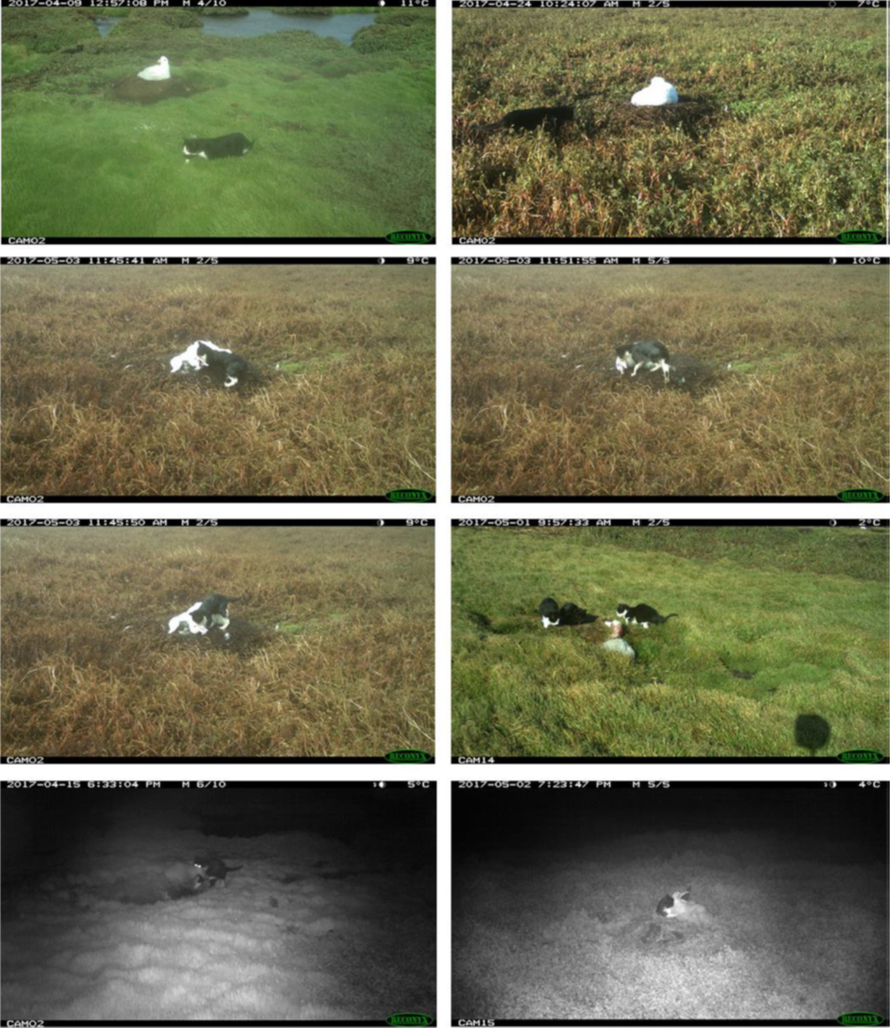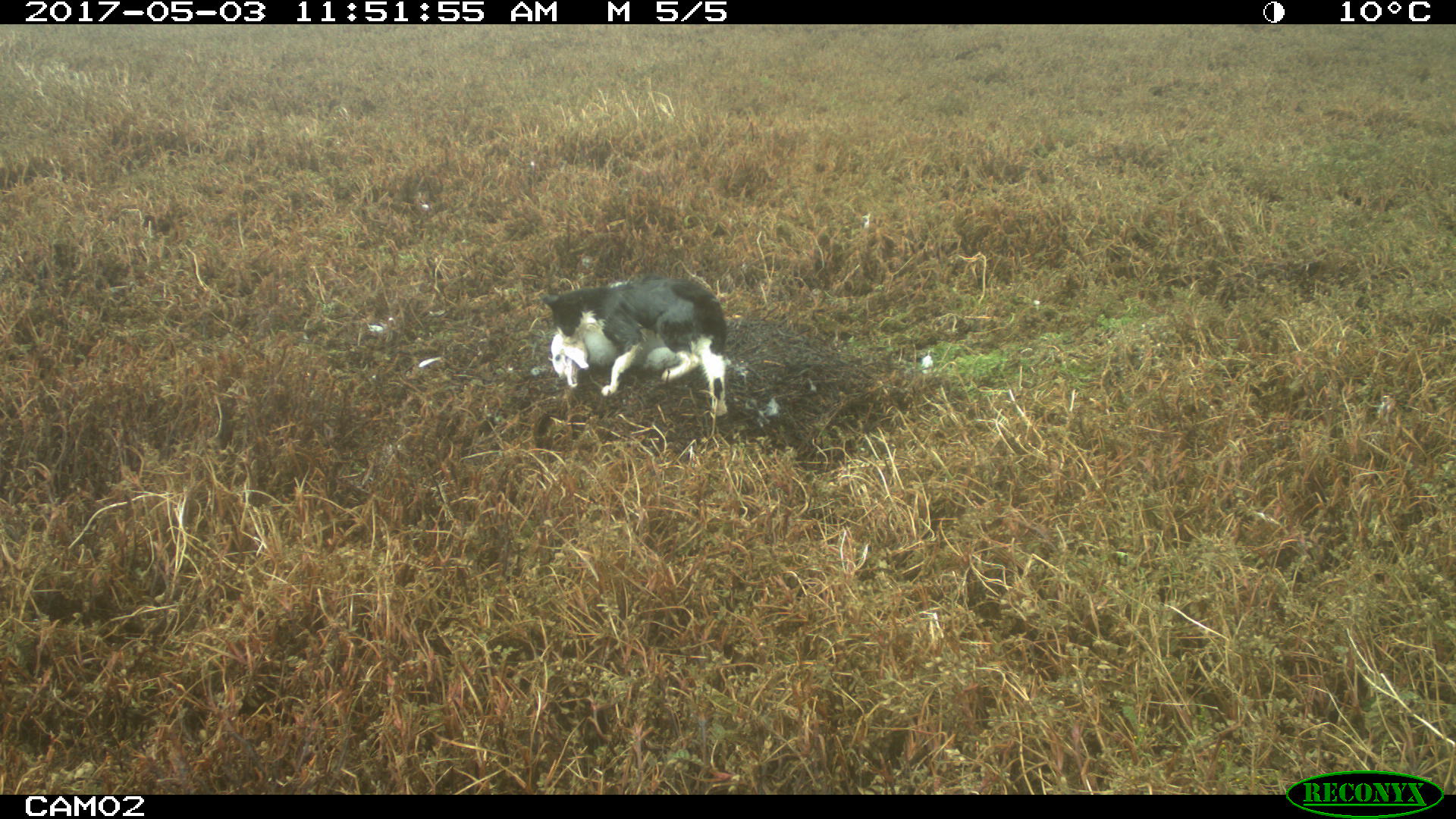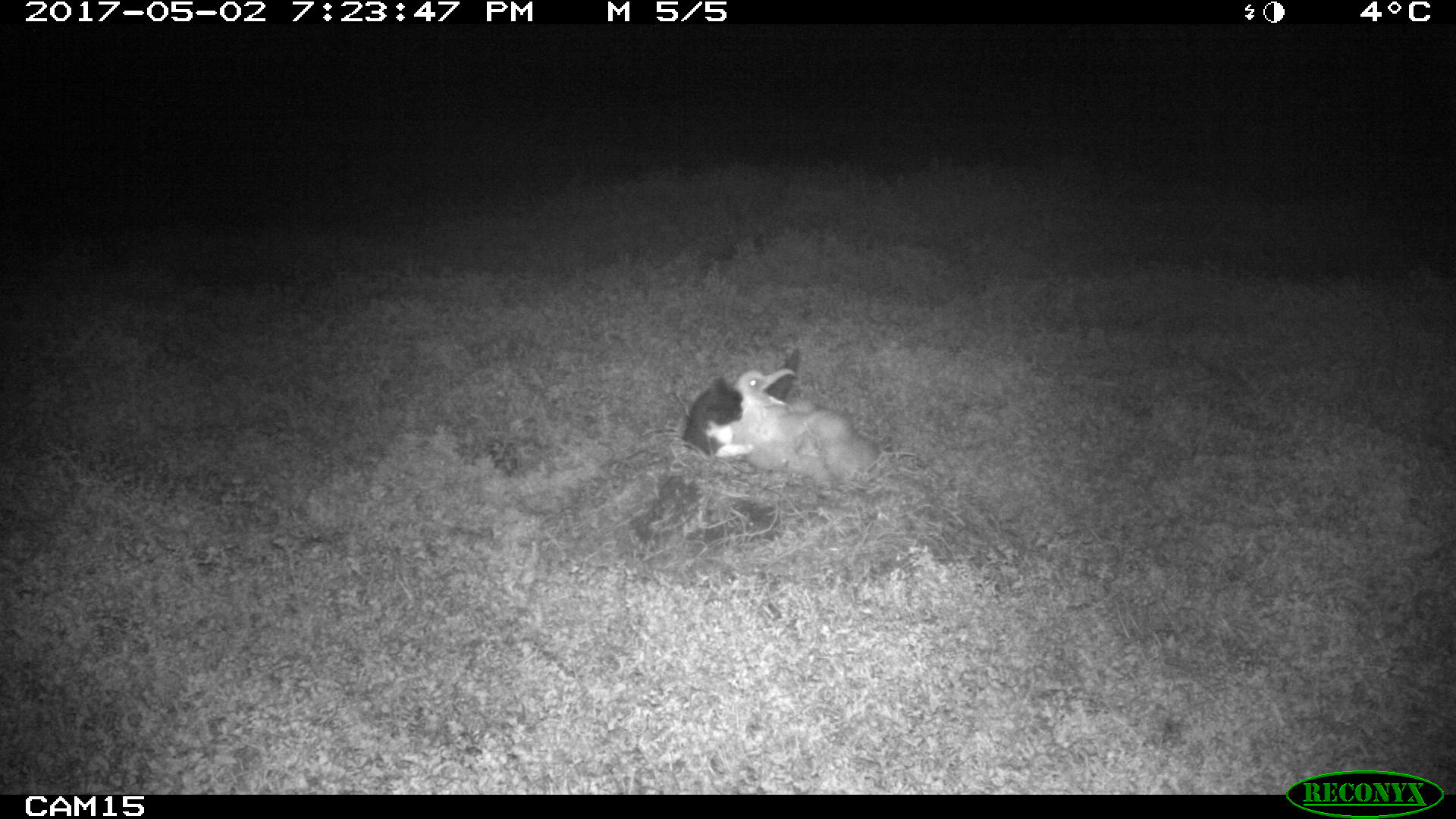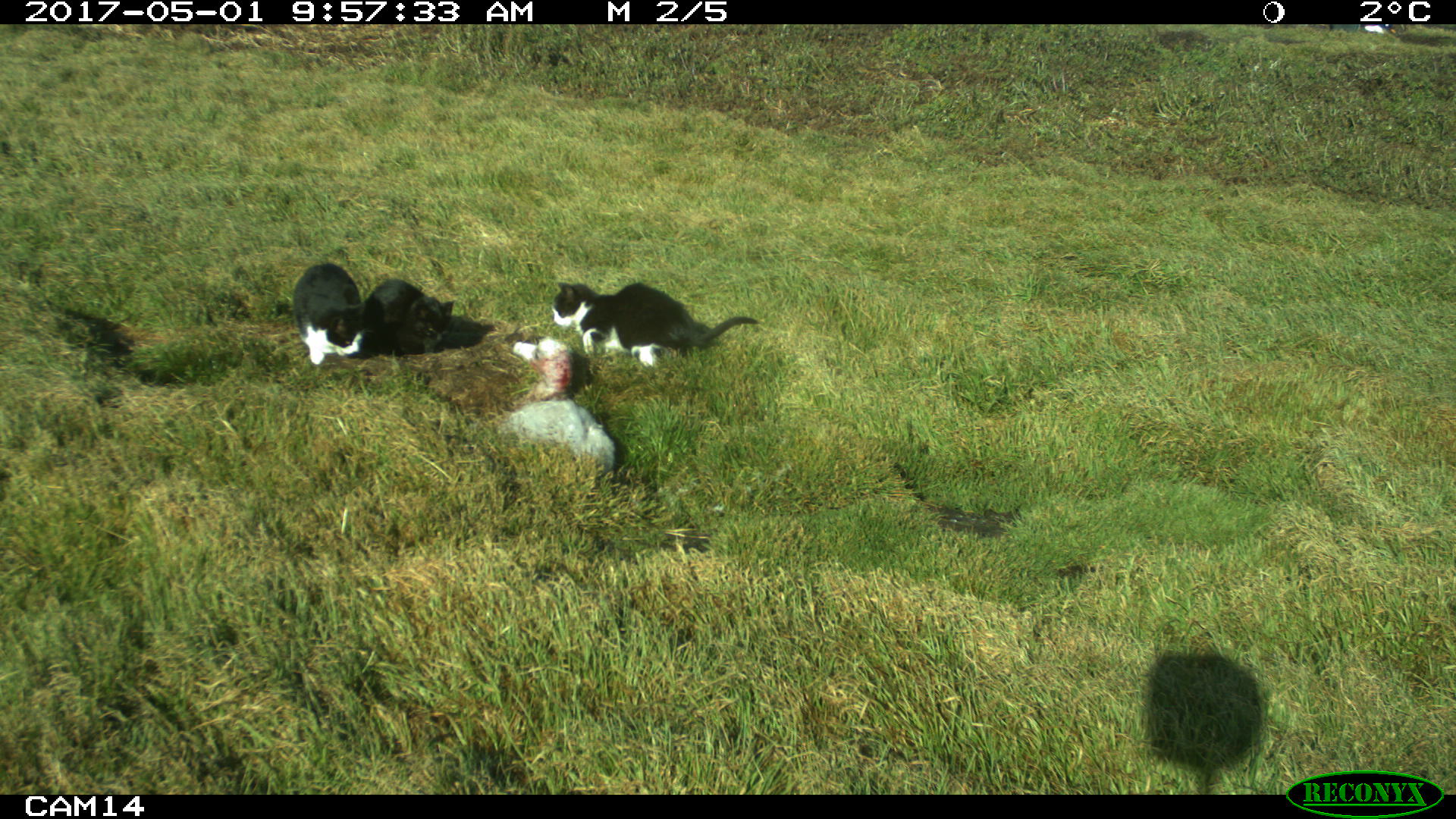A daytime attack: more details below
A night-time attack: more details below
Christophe Barbraud (Centre d'Etudes Biologiques de Chizé, Villiers en Bois, France) and colleagues have published in the journal Biological Invasions demonstrating that feral cats have negative impacts on breeding success and population growth rate of Vulnerable Wandering Albatrosses on the Courbet Peninsula, Kerguelen Island.

Images from camera traps showing the different behaviours of feral cats when interacting with Wandering Albatross chicks at Kerguelen Island. Top row left: passing; top row right: approach; second row and third row left: attack by daytime; third row right: attack by three individuals; bottom row: attacks during the night (taken from the publication)
The paper’s abstract follows:
“Feral cats (Felis catus) are a potential threat for several seabird species including medium sized albatrosses, but studies documenting predation behavior, demographic impacts and effects of predator control are scarce. Here, we present data on feral cat predation behavior on one of the world’s largest seabirds, the wandering albatross (Diomedea exulans) at Kerguelen Island, and show how it affects breeding success and rate of population growth. We assess the effect of a feral cat control experiment on breeding success and population viability. Using 32 camera traps we monitored 25 nests of albatross and detected 295 events showing a potential predator. Of these, 75.2% and 24.8% involved feral cats and giant petrels, respectively. Giant petrels were never implicated in direct predation. We recorded 17 attacks of feral cats on 13 albatross chicks. Attacks lasted in average 52.1 ± 72.9 min, and resulted in the death of 10 of the 13 (76.9%) monitored chicks. Breeding success where attacks were recorded was low (12%) compared to areas with no attack (86%). Mean breeding success during 3 years before cat control was 26% and increased to 80% during the 3 years following the experiment. According to predation scenarios, population modelling showed that the albatross population would decline by 2.7–4.5% per year without cat control. Following cat control the population would increase at 1.8% per year. Our results demonstrate that feral cats predate and have negative impacts on breeding success and population growth rate of wandering albatrosses at Kerguelen Island. We provide recommendations on feral cat control and eradication to mitigate the risk of population decline or local extinction of large albatrosses.”
Three feral cats attack a Wandering Albatross chick on Kerguelen Island
With thanks to Christophe Barbraud for information and photographs
Reference:
Barbraud, C., des Monstiers, B., Chaigne, A., Marteau, C., Weimerskirch, H. & Delord, K. 2021. Predation by feral cats threatens great albatrosses. Biological Invasions doi.org/10.1007/s10530-021-02512-9.
John Cooper, ACAP Information Officer, 07 April 2021

 English
English  Français
Français  Español
Español 

